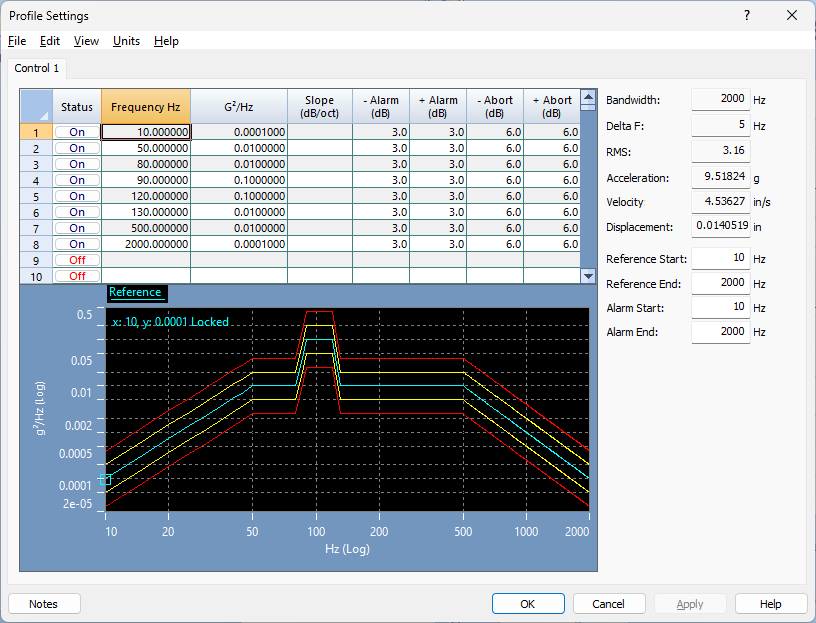Reference, Limit and Abort profiles are defined in terms of slopes and frequency/amplitude breakpoints. A combination of up to 500 slopes and frequency/amplitude breakpoints may be used to define a profile. By default, the Control tab will always be displayed. Right mouse click on the GRMS value (total GRMS of profile) and a submenu will be brought up that allows rescaling of the Reference
Profile Estimated Limits Calculations
The 3 profile “peak” attributes of acceleration, velocity and displacement are calculated based on an integration of the profile specification. The values are calculated in units as selected in the profile dialog (there are 3 available under Unit Selections).
The calculations are based on RMS units. The profile dialog limits are extrapolated to single sided units for peak acceleration, velocity and displacement. This is performed by assuming a Gaussian distribution; the “typical” peak value will be approximately:
3 (sigma) x the RMS level
The (typical) peak values are then reported in the profile setup dialog. These values are used for comparison against the Shaker Limits specifications which are generally listed as +/- values as well (i.e. single ended).
Should the user require a double sided amplitude value for displacement, they should double the reported displacement value from the profile table.
One should note that we’re dealing with a Gaussian random excitation. The peak amplitudes calculated are defined in terms of probabilities.
For example Gaussian random data, the amplitudes will exceed 3xRMS about 0.3% of the time and 4xRMS 0.006% of the time. Higher sigma levels can also be expected (if not limited by the software) on very rare (low probability) instances. The 3 sigma level is generally accepted as the “typical” or average maximum amplitude of the distribution. The user should allow additional shaker “head-room” when running very long duration tests at sigma levels above 3.


